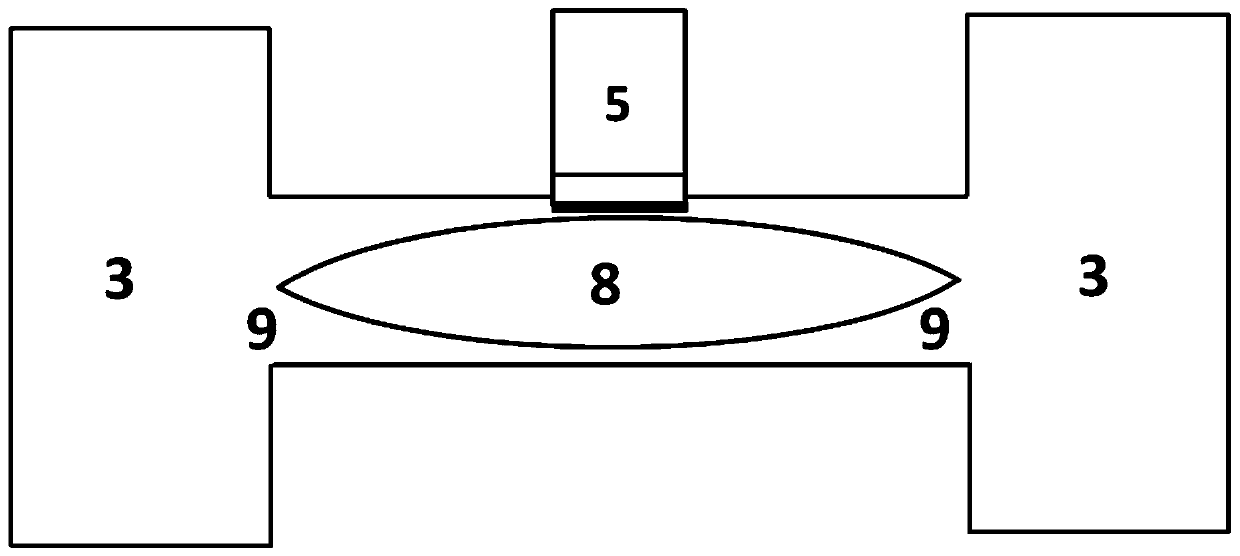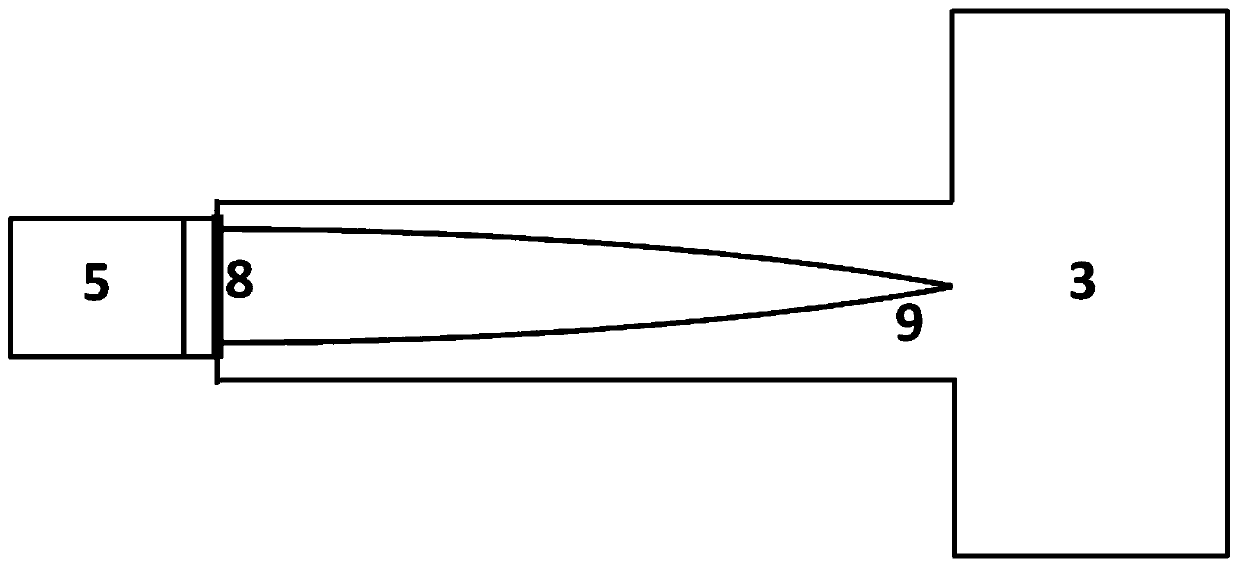A semi-open cavity resonant photoacoustic cell
A photoacoustic cell and sound wave technology, applied in color/spectral characteristic measurement, material analysis through optical means, instruments, etc., can solve the problems of increasing the difficulty of laser collimation, increasing system noise, and limited space for improvement, so as to achieve improvement Detection limit sensitivity, high detection limit sensitivity, convenient matching effect
- Summary
- Abstract
- Description
- Claims
- Application Information
AI Technical Summary
Problems solved by technology
Method used
Image
Examples
Embodiment Construction
[0014] The specific implementation manners of the present invention will be further described below in conjunction with the accompanying drawings and technical solutions.
[0015] The present invention provides such figure 1 The semi-open cavity resonant photoacoustic cell shown includes a housing 1 , a resonant cavity 2 , a buffer chamber 3 , an optical glass window 4 , an acoustic wave sensor 5 , an air inlet 6 and an air outlet 7 . The acoustic wave sensor 5 collects the generated photoacoustic signal, and the concentration information of the gas to be measured can be obtained through analysis and processing. An optical glass window 4 is installed on the end face of the buffer chamber 3 to allow the excitation light to pass through smoothly. An air inlet 6 is provided at the position near the resonant cavity 2 of the acoustic wave sensor 5, and an air outlet 7 is provided on the side wall of the buffer chamber 3. .
[0016] figure 2 The distribution of sound waves insid...
PUM
 Login to View More
Login to View More Abstract
Description
Claims
Application Information
 Login to View More
Login to View More - R&D
- Intellectual Property
- Life Sciences
- Materials
- Tech Scout
- Unparalleled Data Quality
- Higher Quality Content
- 60% Fewer Hallucinations
Browse by: Latest US Patents, China's latest patents, Technical Efficacy Thesaurus, Application Domain, Technology Topic, Popular Technical Reports.
© 2025 PatSnap. All rights reserved.Legal|Privacy policy|Modern Slavery Act Transparency Statement|Sitemap|About US| Contact US: help@patsnap.com



